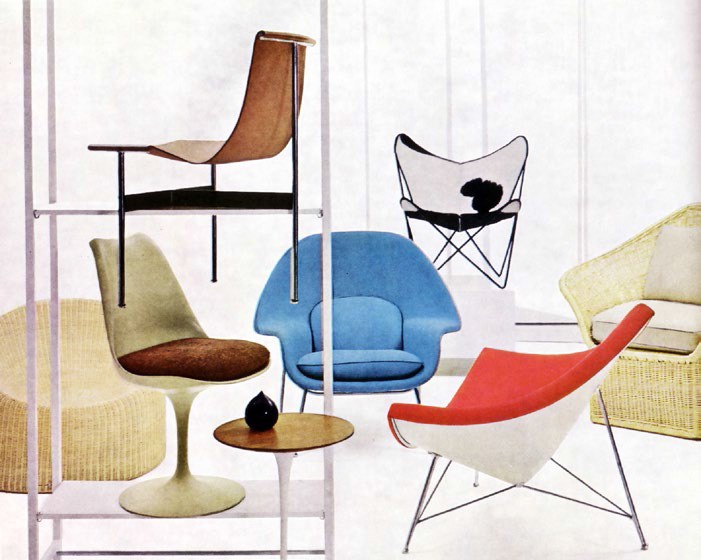Roaring Back
 |
|
|
 |
|
|
|
|
It was springtime 1999 in Palm Springs, and the desert was heating up as summer was approaching.
Something else was heating up too—only Chris Menrad didn't know it.
Menrad, a stock trader with an eye for good design, stumbled upon a butterfly-roofed house in Palm Springs and had to have it.
"I just liked the roofline," he recalls. "It looked like the fins of a Cadillac." About the Twin Palms neighborhood, which was filled with such houses, he thought, "It's a time warp. It's exactly what I want." Menrad had no idea who built or designed the houses.
His real estate agent told him, "There's no rush. Stuff doesn't sell here. It just sits and sits and sits."
Today, Menrad, who has become a real estate broker himself in the desert, smiles at the memory. He knows all about the history of Twin Palms, of architect Bill Krisel, and of the homes' developer, the Alexanders. So does everyone else.
The mid-century modern homes that dot the Coachella Valley, Northern California, and the Los Angeles region are hot.
"Today, buyers, they all know what [Alexander homes] are, and they all want them," Menrad says, recalling that he bought his home just before the great mid-century modern revival hit the then down-at-its-heels desert town.
"It was a zeitgeist that was changing at the moment," he says.
From the 1940s through the mid-'70s, glass-walled modern homes were a growing part of the American suburban landscape, along with the low-slung chairs and abstract, space-age lighting fixtures that adorned them.
Then, gradually, even unnoticeably to some, they were not. But Bill Krisel noticed.
"When I was doing those Palm Springs houses," he recalled, "they were quite different than other tract houses. A lot of builders from all over wanted what I was doing."
"Pretty soon along came what we called 'Cinderella houses,' with picket fences, peaked roofs, and fairytale entrances. My builder clients wanted me to do those, and I didn't know how to do those and I didn't want to do those. So I stopped doing tracts.
"I couldn't understand it. I was so upset. Things were going backwards."




